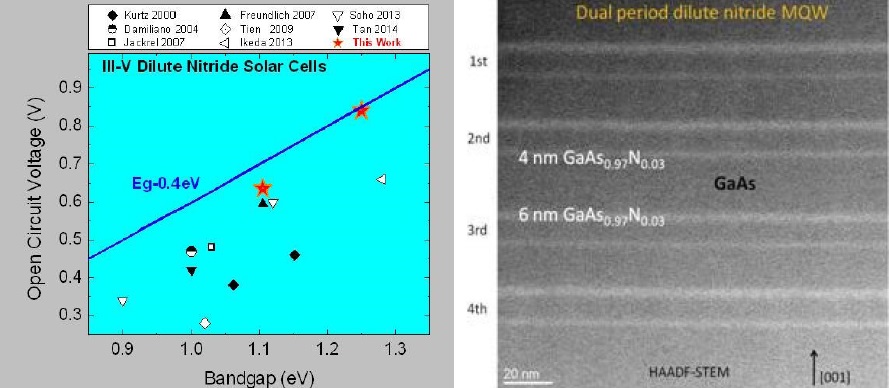Tandem devices based on III-V semiconductors have shown excellent promise for boosting solar cell conversion efficiencies. In particular, the use of a bottom subcell made with dilute nitrogen alloys of these semiconductors in a 3-cells series-connected tandem configuration already has shown practical conversion efficiencies in the range of 44%.
Nevertheless, thus far access to higher efficiencies in this material system has been limited by the relatively poor voltages associated with dilute nitride solar cells. QESST researchers, lead by Dr. Alex Freundlich from the University of Houston, recently have demonstrated 1.1 eV devices with open circuit voltages that exceed the prior art by nearly 10%. To make this breakthrough possible, the team has designed a device that incorporates sets of carefully crafted ultra-thin nanostructures – resonantly coupled multi-quantum wells – of dilute nitrides. The device allows for a near ideal conversion of sunlight into electricity, and the QESST team expects that the integration of these devices in tandems would lead to devices with practical conversion efficiencies of close to 50%.
The results on the 1.1eV cell were presented at the 40th IEEE PVSC in Denver by QESST scholars Gopi Vijaya (UH) and Dinghao Tang (ASU), along with their advisors, Alex Freundlich (UH) and David Smith (ASU). This poster was awarded one of the Best Poster Presentation awards. The work has been submitted for publication.

